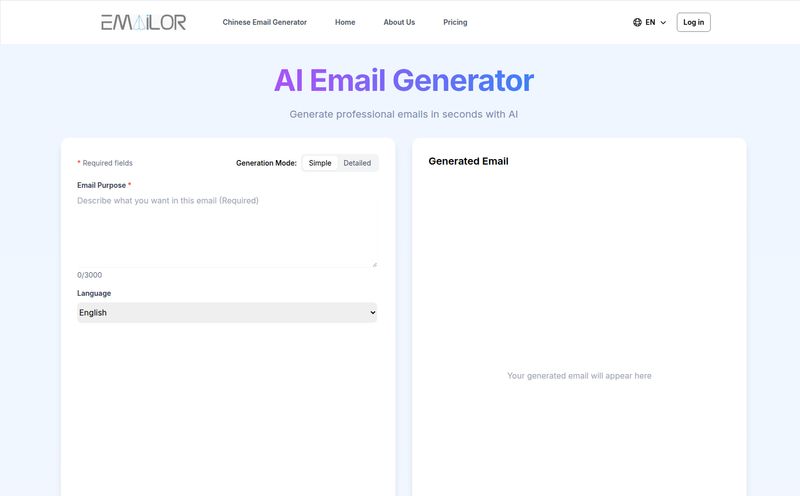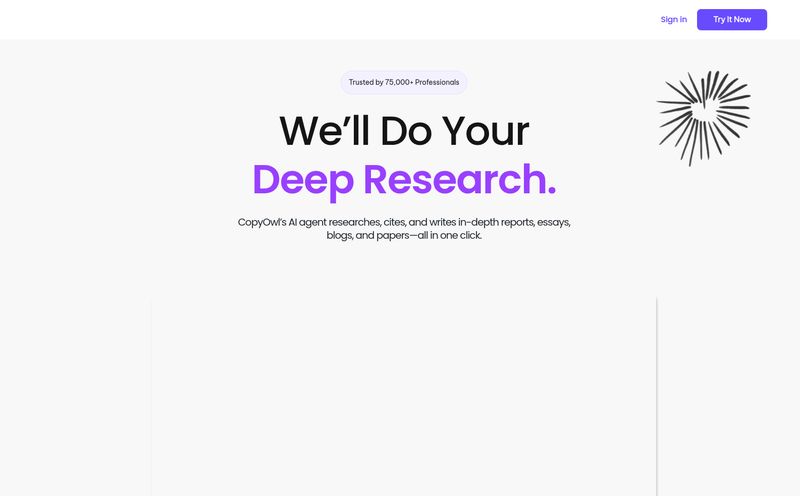Let’s have a little heart-to-heart. You and me. As fellow digital creators, bloggers, or agency owners, we can admit some truths. Here’s one of mine: I hate writing alt text. There, I said it. It’s one of those tasks, like updating plugins or cleaning out your media library, that you know is important. Crucial, even. But good grief, is it tedious.
For every brilliant image you find, you have to stop your creative flow, put on your most descriptive hat, and write a sentence that’s both useful for accessibility and optimized for Google. Multiply that by dozens of images for a single long-form post, and... well, you get it. It’s a grind.
So, when a tool like ImageComply pops onto my radar, promising to automate the whole darn thing with AI, my ears perk up. But as an SEO professional with years of trafic generation experience, I’m also skeptical. Can an AI really do this job well? Or is it just another shiny object? I had to find out.
First Off, Why Bother With Alt Text at All?
Before we get into the tech, let's just quickly touch on the 'why'. If you're already an alt text evangelist, feel free to skip ahead. But for everyone else, this is huge. Alt text (or alternative text) serves two masters, and it serves them both brilliantly.
- Accessibility: This is its primary job. For users with visual impairments who use screen readers, the alt text is read aloud, describing the image. Without it, an image is just a black hole of information. Good alt text makes your content accessible to everyone, which is not just good karma; it’s a legal necessity in many cases (hello, ADA compliance). Think of them as digital curb cuts.
- SEO: Search engines can't see images like we can. They rely on the data surrounding an image to understand its content and context. Alt text is a direct signal to Google and Bing, telling them, “Hey, this is an image of a golden retriever catching a frisbee in a park.” This helps your images rank in Google Images and adds topical relevance to your page, boosting your overall SEO. It’s a seriously underrated part of on-page optimization.
So yeah, it’s not just busywork. It’s fundamental to a good, well-rounded website.
Enter ImageComply: The AI Intern for Your Images
So what exactly is ImageComply? In short, it’s a WordPress plugin that uses AI to automatically scan your images and generate descriptive alt text for them. No more manual entry for every single picture. You install it, connect it, and let it do the heavy lifting.
The whole process they advertise is deceptively simple, which I appreciate. There's no complex dashboard or a million settings to fiddle with. It's designed to be a set-it-and-forget-it solution, with a quick human check.
How It Actually Works in Practice
I’m always wary of things that sound too easy, but the setup here is genuinely straightforward. It boils down to three steps:
- Install: You grab the plugin from their site or the WordPress directory, install it like any other plugin, and activate it. Standard stuff.
- Generate: This is the magic part. You tell the plugin to do its thing, and it connects to its servers to analyze your images and write the alt text for every image in your media library that's missing it.
- Review: The AI generates the text, but it doesn't just blindly publish it. It puts it in the alt text field for you, ready for a quick once-over. You can then approve it or tweak it if the AI was a little… eccentric.

Visit ImageComply
The Big Wins: What I Genuinely Like About ImageComply
After playing around with it, a few things really stood out to me as major benefits, especially for those of us juggling multiple projects.
It's a Massive Time-Saver
This is the most obvious one, but it can’t be overstated. The time I’d normally spend meticulously describing images can now be spent on strategy, writing, or just grabbing a coffee. For a large site with thousands of legacy images that have been neglected (we all have them), this tool isn't a time-saver; it’s a lifesaver. Running it on an old client site took care of years of image debt in an afternoon.
Your Image SEO Gets a Serious Boost
So many people just ignore image SEO. They upload `IMG_8734.jpg` and call it a day. ImageComply ensures that every single image is pulling its weight for SEO. By providing descriptive alt text, you’re giving Google so much more context, which can lead to better rankings and more organic traffic from image searches. It’s like finding a whole new traffic source you forgot you had.
It’s a Step Towards a More Inclusive Web
Honestly, this feels just as important as the SEO bit. Making your website accessible is simply the right thing to do. It ensures that everyone, regardless of ability, can get value from your content. Tools like ImageComply lower the barrier to achieving better accessibility, and I’m all for that. It moves ADA compliance from a “maybe one day” task to something you can tackle right now.
Let's Talk Money: The ImageComply Pricing Structure
Alright, so it’s not all free. The tool runs on a freemium model, which I think is fair. You can get started and test it out, but for real, ongoing use, you'll need a paid plan. The pricing page lays it out pretty clearly.
They have two main ways to pay: Credits or Monthly Plans.
- Pay-as-you-go Credits: You can buy a block of credits, like 1,000 credits for around $50. This is great if you have a one-time project, like clearing the backlog on an existing site, and don't need ongoing generation.
- Monthly Subscriptions: This seems to be the main model.
- The Essential Coverage plan is about $25 a month. It covers one site and gives you "unlimited credits" (with a fair use policy, of course) and basic support. Perfect for a small business or a single primary blog.
- The Total Coverage plan is about $50 a month. This is aimed at agencies and freelancers, covering unlimited sites with unlimited credits and priority support.
The promise of "Image Optimization (coming soon)" is also interesting. If they bundle that in, the value proposition gets even stronger. For now, the pricing seems reasonable for the problem it solves, especialy for businesses and agencies.
The Other Side of the Coin: A Few Caveats
No tool is perfect, and it would be dishonest to pretend this one is. The AI is good, but it's not a human. For a standard photo, like "a close up of a bunch of strawberries," it's spot on. But for more abstract or nuanced images—charts, graphs, or ironic memes—you'll absolutely need to step in and edit the suggestion. Relying on it 100% without review is a mistake. Think of it as a very capable assistant, not a replacement for your brain.
Also, it's another subscription. In a world of a million SaaS tools charging monthly, you have to decide if this automation is worth the recurring cost for your specific needs.
So, Is ImageComply Actually Worth It?
My final take? Yes, for the right person.
If you're a freelancer, an agency, or a business owner running a content-heavy WordPress site, the value is undeniable. The amount of time you save will almost certainly outweigh the monthly cost, and the combined benefits of improved SEO and better accessibility are a massive win. It’s an investment in efficiency and inclusivity.
If you run a small personal blog where you only post a few images a month? You can probably stick to doing it manually. But for everyone else who has felt the soul-crushing weight of an empty alt text field, ImageComply is a more than welcome solution. It's a well-built tool that tackles a real, nagging problem. And for that, it gets a solid nod of approval from me.
Frequently Asked Questions about ImageComply
1. How accurate is the AI-generated alt text?
In my experience, it's surprisingly accurate for most common photographs and objects. It can clearly identify things like "a person holding a Rubik's cube" or "a close up of a game of scrabble." However, for complex charts, infographics, or images with subtle emotional context, you should always review and edit the text to ensure it's perfect.
2. Does this guarantee my site will be ADA compliant?
ImageComply is a powerful tool to help you meet one of the key requirements of ADA and WCAG guidelines—providing text alternatives for non-text content. However, full ADA compliance involves many other factors, like site structure, color contrast, and keyboard navigation. So while it's a huge step in the right direction for image accessibility, it doesn't cover everything else on its own.
3. Can I try ImageComply for free?
Yes, they have a free tier that allows you to get started. According to their site, you get a generous number of free credits to test it out and see how it works on your own images before committing to a paid plan.
4. What happens to my alt text if I cancel my subscription or deactivate the plugin?
Any alt text that has been generated and saved to your images in the WordPress Media Library will remain there. You won't lose the work that's already been done. You just won't be able to automatically generate new alt text for future uploads unless you reactivate your plan.
5. Is this only for new images, or can it fix old ones?
Both! One of its biggest strengths is its ability to bulk-process your entire existing media library. You can run it on all your old, neglected images to bring your whole site up to standard, in addition to having it handle new uploads automatically.
6. Will this plugin slow down my website?
The image processing happens on ImageComply's external servers, not on your own hosting. This means it shouldn't have a noticeable impact on your website's front-end performance or loading speed. The plugin itself is lightweight.
References and Sources
- ImageComply Official Website
- ImageComply Pricing Details
- Information and Technical Assistance on the Americans with Disabilities Act



